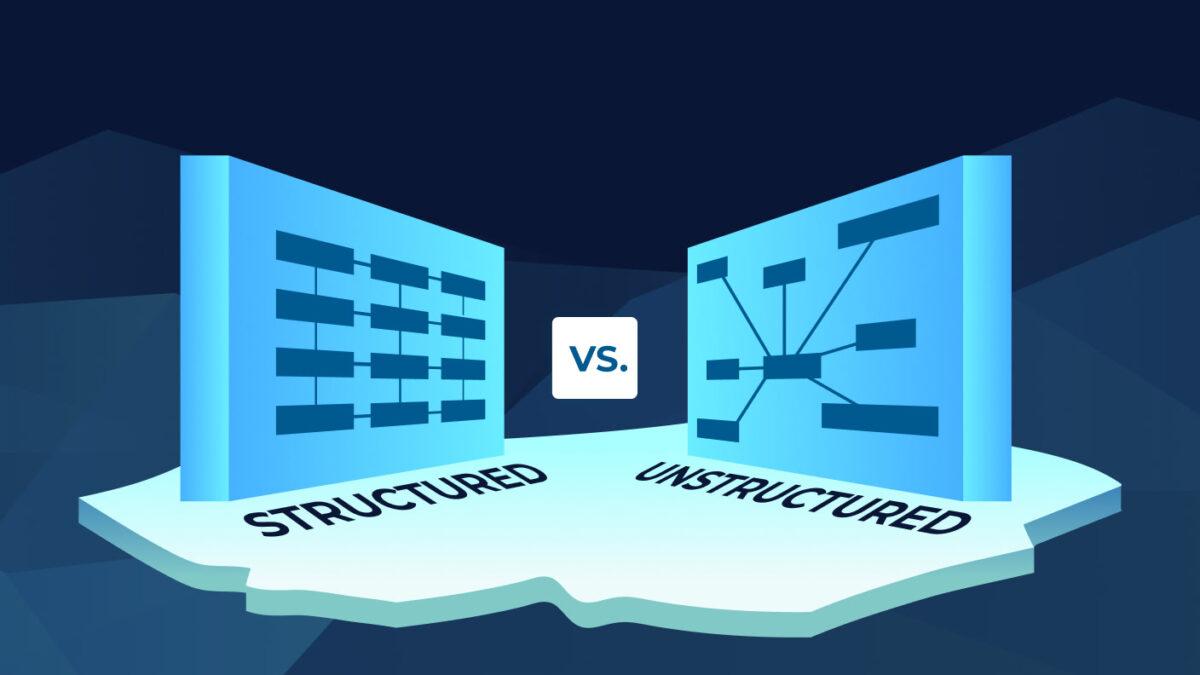For those interested in big data, In this post, we will talk about the two main categories of big data: structured and unstructured data, and how they differ. Files can take on many different shapes when it comes to data.
We all know that data comes in two primary categories: structured data and unstructured data. For data professionals, the variations between each are crucial because each is sourced and collected differently and resides in a different kind of database.
Differentiating Structured and Unstructured data
Structured data is distinct since it is defined and searchable. Data like dates, phone numbers, and product SKUs are included in this. All other information that is more challenging to categorize or search for, such as emails, podcasts, social media posts, and unstructured data, is referred to as unstructured data. The majority of data worldwide is unstructured, though. Let’s talk about these things:
What is Structured and Unstructured Data?
First of all, we need to understand what does structured and unstructured data stands for. Typically ordered and searchable quantitative data is referred to as structured data. In a relational database, structured data may be “queried” into and searched for using the programming language SQL.
Structured Data
Structured data is simple to look for and evaluate. Structured data is present in a predetermined format. One of the best examples of structured data is a relational database containing tables with rows and columns. Tables, such as those in spreadsheets created with Google Docs or Excel, are typically where structured data may be found. The structured data is managed using the structured query language, or SQL.
Machine language can easily comprehend and is well-organized in structured data. Sales transactions, airline reservation systems, inventory control, and other uses for relational databases with structured data are widespread.
Unstructured Data
Let’s now learn more about the many sorts of unstructured data. Finding insights within unstructured data is difficult, but when properly analyzed, text data can be very valuable for obtaining qualitative results, such as customer opinions, or organizing business data, such as customer service tickets, into distinct categories so that the right employee is directed to them.
Unstructured data is information that is not clearly organized and does not fit into a predetermined framework. Unstructured data includes all types of text, including reports, emails, social media postings, videos, audio files, and still images.
| Structured Data | Unstructured Data |
| This type of data is based on a relational database.
This kind of data is known to be less flexible and schema-dependent.
Less salable to database schema.
Performance is higher that helps in performing complex joining.
Structured data comprises of predefined format.
Easy to search. |
Based on character and binary data, unstructured data is created.
It is more versatile because to the unstructured data and lack of a schema.
More salable as compared to Structured data.
Whereas, unstructured data, has less performance than both semi-structured and structured data.
Unstructured data has a variety of formats, that comes in a variety of sizes and shapes.
Searching data is much more difficult.
|
Additional differences between Structured and Unstructured Data
In general, structured data refers to data with a specific format and organization, such as tables, arrays, and records in a database. This type of data can be quickly processed, stored, and retrieved by computers because it follows a defined structure.
Unstructured data, on the other hand, does not have a specific format or organization. It includes natural language text, images, audio, and video. This type of data is more complex and difficult to process than structured data because it does not follow a defined structure.
Pointers can still reference specific items in unstructured data, but the data itself may need a more well-defined structure. For example, pointers can reference particular characters or words within a text document. Still, the document itself may need a defined system in terms of the organization of its text.
Final Words
This was how we learned about In conclusion, Structured and unstructured data differ in how they are organized and formatted. Structured data can be used to see specific customer behavior or quantitative patterns, but the amount of information you can acquire by collecting and analyzing unstructured data proliferates. However, DataBench is always there to help and guide you in the best way possible.


